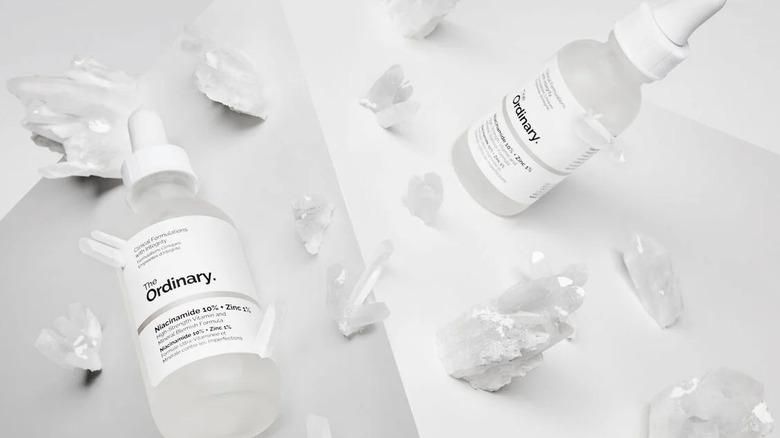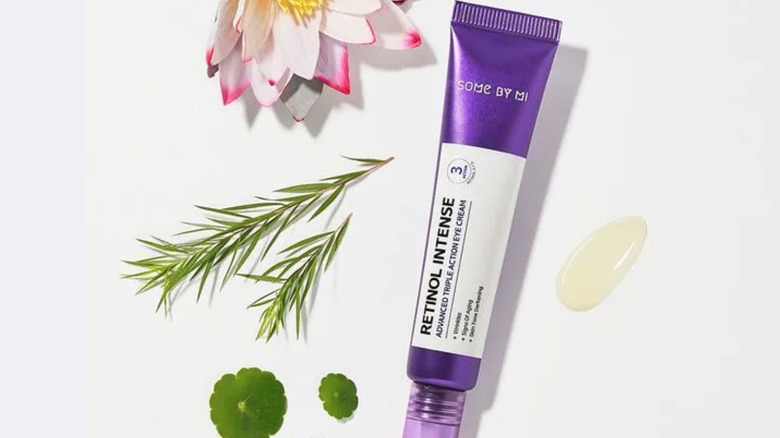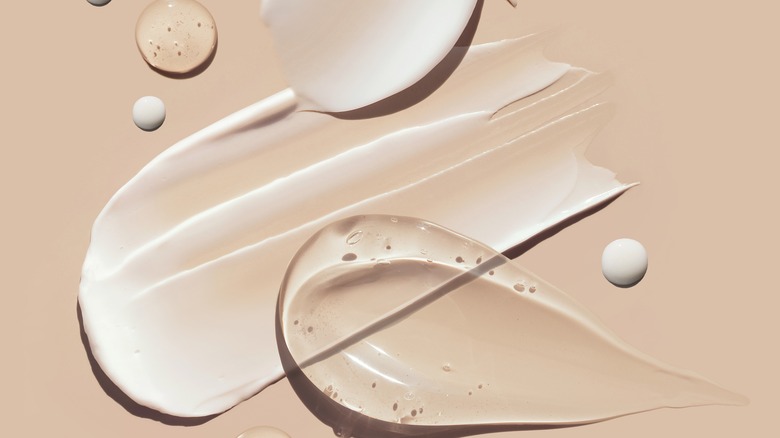Is It Safe To Use Niacinamide With Retinol In Your Skincare Routine?
Once the sticky world of skincare takes hold of you, there is no turning back. It starts simple, with a face wash and a moisturizer. Good! Skin needs hydration, and you can't let the sweat and grime of a day's labor get in the way of good skin. But then someone recommends adding a weekly exfoliation treatment to help with the more stubborn buildup — all that gunk in your pores can be helped with some AHA or BHA, used sparingly. But then why not tackle the root of the problem with a niacinamide serum and tighten those pores once and for all? And you can't forget retinol to aid in cell turnover. New skin is good skin, right? Oh, and sunscreen. That one you can't do without. Skincare aficionados are very serious about that one.
It seems the more you dabble in skincare, the more complicated it gets. But we're not all experts. So, how can we know we're doing the right things and using the right products? Which products mix well, and which don't? Most importantly, is it safe to use niacinamide and retinol in one routine? Worry not, the research is all here (and spoiler alert: they complement each other beautifully).
What does niacinamide do?
Niacinamide is one of those ingredients that skincare influencers do not tire of recommending. Nor should they, because experts agree this versatile ingredient helps with a variety of skin concerns, including pore size, discoloration, acne, and sun spots.
Products with niacinamide can do a lot for your skin. According to Cleveland Clinic, niacinamide is a type of vitamin B3, and it helps brighten your complexion by encouraging the production of keratin for skin that feels and looks healthier. Products that incorporate niacinamide as an active ingredient tend to lock hydration into the skin, regulate oil production to minimize the appearance of pores, and even out the skin tone.
When incorporated into skincare, it can come in many forms and varying concentrations, but serums are the most popular way to incorporate niacinamide into one's skincare routine. It comes down to personal taste whether you want your niacinamide to reach your pores through serums, creams, or cleansers.
What does retinol do?
Retinol is one of those ingredients that can make or break one's skin through no fault of its own. Using retinol is tricky, and building up to the right concentration for your skin is key to a good experience and results you'll love.
Retinol is commonly used to reduce the appearance of fine lines and smooth existing wrinkles, but it can also help with certain forms of acne. It is a form of vitamin A, which is known to accelerate the production of cells and boost collagen production (via Cleveland Clinic). Retinol is effective in clearing most forms of acne, fading acne scars, treating sun spots, and smoothing wrinkles.
Some milder retinoids can be given as over-the-counter products, while stronger forms like retin-A require a prescription. It typically comes in the form of serums but can also be found in creams and moisturizers in lower concentrations.
Can they coexist in your skincare routine?
Yes, these beloved ingredients can be used separately or together. Niacinamide and retinol are perfectly safe to combine and can even enhance one another's benefits when incorporated into the same skincare routine. While some skin enthusiasts may choose to apply their niacinamide and retinol serums on different days of the week, depending on their specific concerns, experts reassure us of the harmlessness of mixing and matching these two ingredients.
Dr. Andrea Suarez (Dr. Dray on Youtube), a board-certified dermatologist based in Houston, Texas, helps us understand how these ingredients work well together. Niacinamide, she says, helps with oil control, so for those people using retinol for acne control, the two ingredients will work in tandem to achieve the desired results. "Niacinamide also helps with the strength of the moisture barrier, and it may help you to tolerate the irritating side effects of retinol," says Dr. Suarez.
You can combine these ingredients by purchasing a product that lists both active ingredients or by buying separate products and layering one over the other. It is recommended that if you do the latter, products with niacinamide should be applied first and then followed by retinol (via Healthline).



